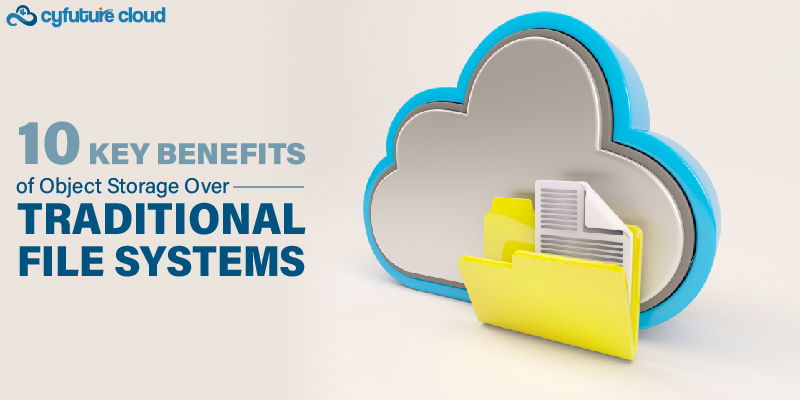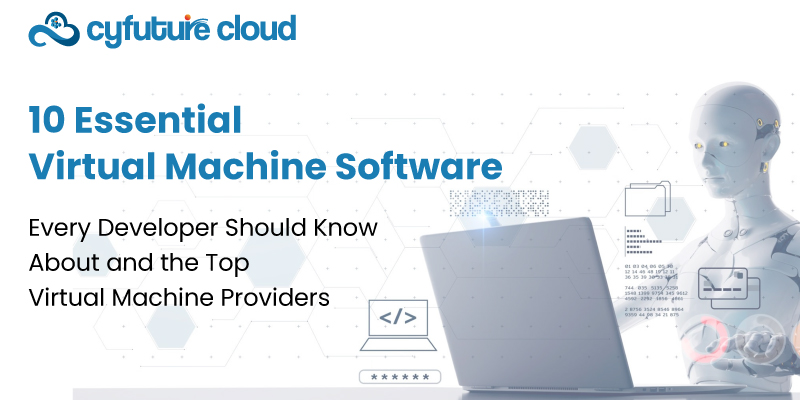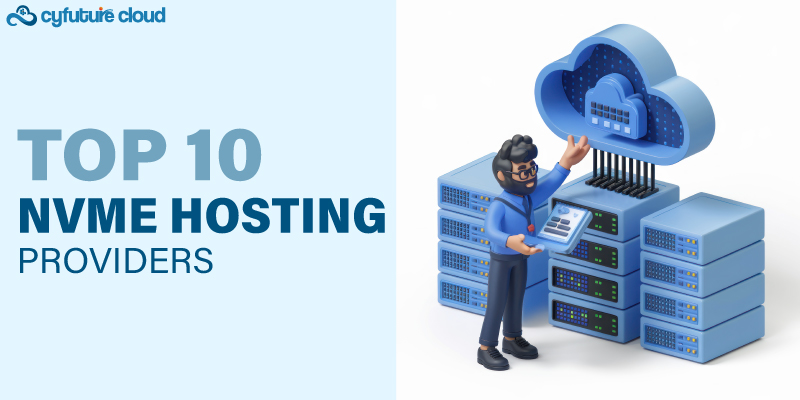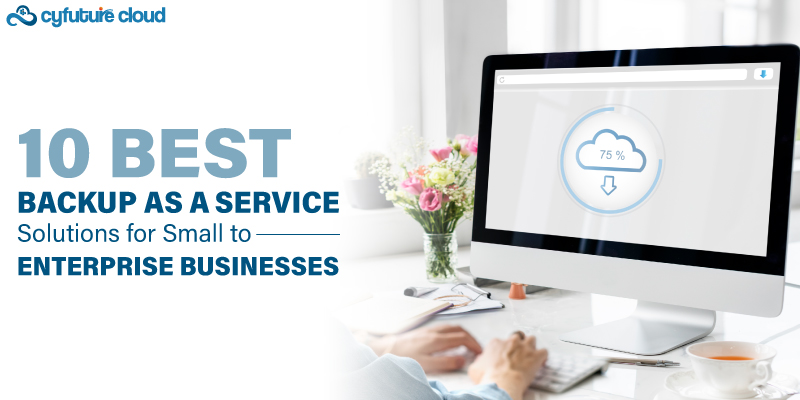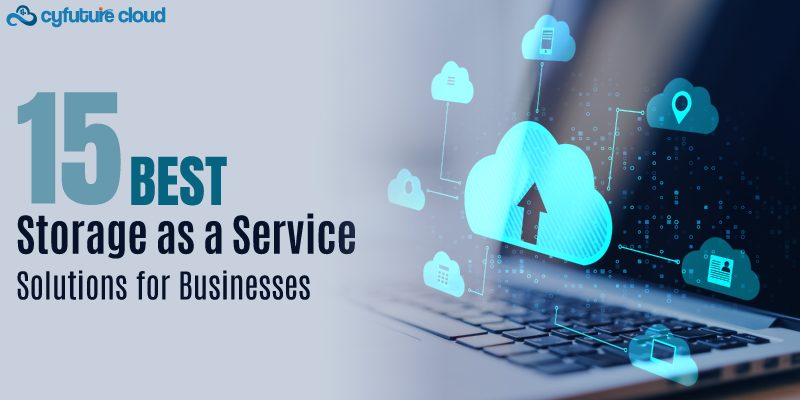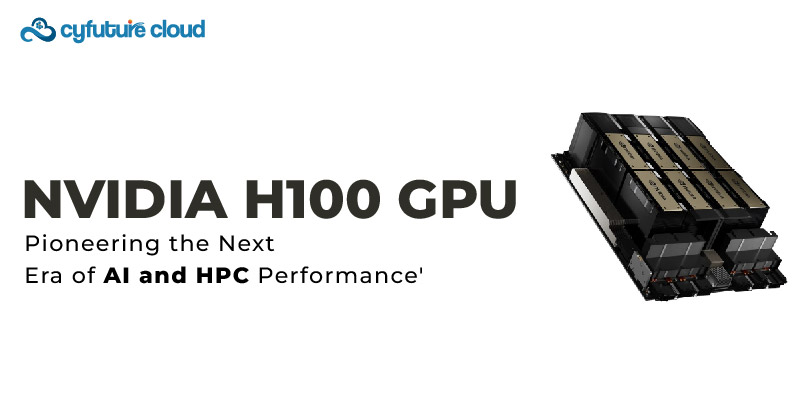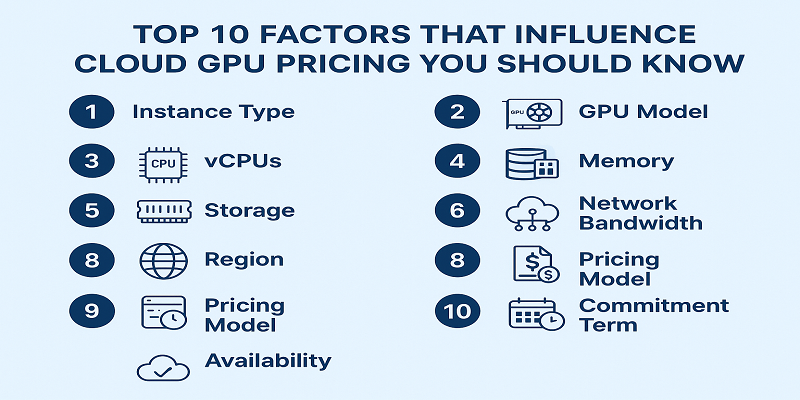Get 69% Off on Cloud Hosting : Claim Your Offer Now!
- Products
-
Compute
Compute
- Predefined TemplatesChoose from a library of predefined templates to deploy virtual machines!
- Custom TemplatesUse Cyfuture Cloud custom templates to create new VMs in a cloud computing environment
- Spot Machines/ Machines on Flex ModelAffordable compute instances suitable for batch jobs and fault-tolerant workloads.
- Shielded ComputingProtect enterprise workloads from threats like remote attacks, privilege escalation, and malicious insiders with Shielded Computing
- GPU CloudGet access to graphics processing units (GPUs) through a Cyfuture cloud infrastructure
- vAppsHost applications and services, or create a test or development environment with Cyfuture Cloud vApps, powered by VMware
- Serverless ComputingNo need to worry about provisioning or managing servers, switch to Serverless Computing with Cyfuture Cloud
- HPCHigh-Performance Computing
- BaremetalBare metal refers to a type of cloud computing service that provides access to dedicated physical servers, rather than virtualized servers.
-
Storage
Storage
- Standard StorageGet access to low-latency access to data and a high level of reliability with Cyfuture Cloud standard storage service
- Nearline StorageStore data at a lower cost without compromising on the level of availability with Nearline
- Coldline StorageStore infrequently used data at low cost with Cyfuture Cloud coldline storage
- Archival StorageStore data in a long-term, durable manner with Cyfuture Cloud archival storage service
-
Database
Database
- MS SQLStore and manage a wide range of applications with Cyfuture Cloud MS SQL
- MariaDBStore and manage data with the cloud with enhanced speed and reliability
- MongoDBNow, store and manage large amounts of data in the cloud with Cyfuture Cloud MongoDB
- Redis CacheStore and retrieve large amounts of data quickly with Cyfuture Cloud Redis Cache
-
Automation
Automation
-
Containers
Containers
- KubernetesNow deploy and manage your applications more efficiently and effectively with the Cyfuture Cloud Kubernetes service
- MicroservicesDesign a cloud application that is multilingual, easily scalable, easy to maintain and deploy, highly available, and minimizes failures using Cyfuture Cloud microservices
-
Operations
Operations
- Real-time Monitoring & Logging ServicesMonitor & track the performance of your applications with real-time monitoring & logging services offered by Cyfuture Cloud
- Infra-maintenance & OptimizationEnsure that your organization is functioning properly with Cyfuture Cloud
- Application Performance ServiceOptimize the performance of your applications over cloud with us
- Database Performance ServiceOptimize the performance of databases over the cloud with us
- Security Managed ServiceProtect your systems and data from security threats with us!
- Back-up As a ServiceStore and manage backups of data in the cloud with Cyfuture Cloud Backup as a Service
- Data Back-up & RestoreStore and manage backups of your data in the cloud with us
- Remote Back-upStore and manage backups in the cloud with remote backup service with Cyfuture Cloud
- Disaster RecoveryStore copies of your data and applications in the cloud and use them to recover in the event of a disaster with the disaster recovery service offered by us
-
Networking
Networking
- Load BalancerEnsure that applications deployed across cloud environments are available, secure, and responsive with an easy, modern approach to load balancing
- Virtual Data CenterNo need to build and maintain a physical data center. It’s time for the virtual data center
- Private LinkPrivate Link is a service offered by Cyfuture Cloud that enables businesses to securely connect their on-premises network to Cyfuture Cloud's network over a private network connection
- Private CircuitGain a high level of security and privacy with private circuits
- VPN GatewaySecurely connect your on-premises network to our network over the internet with VPN Gateway
- CDNGet high availability and performance by distributing the service spatially relative to end users with CDN
-
Media
-
Analytics
Analytics
-
Security
Security
-
Network Firewall
- DNATTranslate destination IP address when connecting from public IP address to a private IP address with DNAT
- SNATWith SNAT, allow traffic from a private network to go to the internet
- WAFProtect your applications from any malicious activity with Cyfuture Cloud WAF service
- DDoSSave your organization from DoSS attacks with Cyfuture Cloud
- IPS/ IDSMonitor and prevent your cloud-based network & infrastructure with IPS/ IDS service by Cyfuture Cloud
- Anti-Virus & Anti-MalwareProtect your cloud-based network & infrastructure with antivirus and antimalware services by Cyfuture Cloud
- Threat EmulationTest the effectiveness of cloud security system with Cyfuture Cloud threat emulation service
- SIEM & SOARMonitor and respond to security threats with SIEM & SOAR services offered by Cyfuture Cloud
- Multi-Factor AuthenticationNow provide an additional layer of security to prevent unauthorized users from accessing your cloud account, even when the password has been stolen!
- SSLSecure data transmission over web browsers with SSL service offered by Cyfuture Cloud
- Threat Detection/ Zero DayThreat detection and zero-day protection are security features that are offered by Cyfuture Cloud as a part of its security offerings
- Vulnerability AssesmentIdentify and analyze vulnerabilities and weaknesses with the Vulnerability Assessment service offered by Cyfuture Cloud
- Penetration TestingIdentify and analyze vulnerabilities and weaknesses with the Penetration Testing service offered by Cyfuture Cloud
- Cloud Key ManagementSecure storage, management, and use of cryptographic keys within a cloud environment with Cloud Key Management
- Cloud Security Posture Management serviceWith Cyfuture Cloud, you get continuous cloud security improvements and adaptations to reduce the chances of successful attacks
- Managed HSMProtect sensitive data and meet regulatory requirements for secure data storage and processing.
- Zero TrustEnsure complete security of network connections and devices over the cloud with Zero Trust Service
- IdentityManage and control access to their network resources and applications for your business with Identity service by Cyfuture Cloud
-
-
Compute
- Solutions
-
Solutions
Solutions
-
 Cloud
Hosting
Cloud
Hosting
-
 VPS
Hosting
VPS
Hosting
-
GPU Cloud
-
 Dedicated
Server
Dedicated
Server
-
 Server
Colocation
Server
Colocation
-
 Backup as a Service
Backup as a Service
-
 CDN
Network
CDN
Network
-
 Window
Cloud Hosting
Window
Cloud Hosting
-
 Linux
Cloud Hosting
Linux
Cloud Hosting
-
Managed Cloud Service
-
Storage as a Service
-
 VMware
Public Cloud
VMware
Public Cloud
-
 Multi-Cloud
Hosting
Multi-Cloud
Hosting
-
 Cloud
Server Hosting
Cloud
Server Hosting
-
 Bare
Metal Server
Bare
Metal Server
-
 Virtual
Machine
Virtual
Machine
-
 Magento
Hosting
Magento
Hosting
-
Remote Backup
-
 DevOps
DevOps
-
 Kubernetes
Kubernetes
-
 Cloud
Storage
Cloud
Storage
-
NVMe Hosting
-
 DR
as s Service
DR
as s Service
-
-
Solutions
- Marketplace
- Pricing
- Resources
- Resources
-
By Product
Use Cases
-
By Industry
- Company
-
Company
Company
-
Company
An Explanation of the Different Types of Cloud Computing
Table of Contents
Nowadays, with different types of cloud computing options available, cloud computing has become a mainstream technology. As per the most recent report on the State of Cloud, “approx 94% of firms are expected to be using at least one cloud service.”
However, according to IBM’s commissioned study, only 20% of enterprise workloads are currently running on the cloud, despite this trend, according to a study released this week. It means that the potential for cloud growth is still exponential.
After only transferring the most fundamental workloads, businesses still have a long way to go on their path to the cloud. The migration of 80% of business workloads that are currently on-premises might potentially treble the size of the current cloud industry.
Many firms are still unaware of the cloud computing services and deployment options that are available, despite the maturity of the cloud industry. With the constant innovation of tech leaders like Google, Amazon, and Microsoft, new cloud goods and services are essentially produced every day.
In this blog, to assist you in managing the complexity of cloud computing, we’ll go over the several types of cloud computing that are readily available. So, let’s get started!
Types of Cloud Computing
| Cloud Service Model | Description |
|---|---|
| Infrastructure as a Service (IaaS) | Provides virtualized computing resources such as virtual machines, storage, and networking over the internet. Users manage applications, data, runtime, middleware, and the operating system. |
| Platform as a Service (PaaS) | Offers a platform allowing customers to develop, run, and manage applications without dealing with underlying infrastructure complexities. Facilitates quicker deployment and application development. |
| Software as a Service (SaaS) | Delivers software applications over the internet, eliminating the need for installation or maintenance. Users access applications via a web browser, enjoying scalable, on-demand software usage. |
Wide Variety of Cloud Computing
When we discuss the term cloud computing, it becomes a bit confusing. One of the top reasons is it has several types of clouds available. Each of them provides different capabilities. Consequently, there are the following main types of cloud computing:
1. Public Cloud:
In its most basic form, the public cloud is a vast collection of readily accessible computing resources. For instance, networking, memory, central processing unit (CPU), and storage. These resources are located in one of the public cloud vendor’s globally dispersed and properly managed data centers. Therefore, you can rent them to build an IT infrastructure.
These essential computing resources are connected to managed services including application servers, security systems, and database servers. You can rent managed services if you don’t want to deal with the hassle of configuring and managing the full solution. The main suppliers of this kind of cloud service are Google Cloud Platform (GCP), Amazon Web Services (AWS), and Microsoft Azure, however, there are others.
Top Gains of Public Cloud:
There are several charming gains of the public cloud. Some of them are the following:
- In comparison to private and hybrid clouds, the public cloud is wallet-friendly.
- You don’t need to worry about maintenance in the public cloud. This is because the public cloud is maintained by cloud service providers.
- The public cloud is easy to integrate. This is because it offers flexibility to the customers.
- This location of the public cloud is independent. All of its services are delivered through the internet.
- As per the requirement of computing resources, the public cloud is highly scalable.
- Anyone can access it. Therefore, there is no limit to the number of users.
2. Private Cloud:
One private business or group owns and utilizes private clouds. They have typically utilized the company’s hardware and been physically located at the data center.
The other option is for a business to host its private cloud on its hardware using a third-party provider. The resources are kept in a remotely managed data center. So in that situation, the private cloud is similar to the public cloud. These companies will offer administrative services. But, they won’t be able to offer the full range of services that a public cloud can offer.
Top Advantages of Private Cloud:
There are several top advantages of the private cloud. Some of them are the following. So, let’s come to the points directly.
- It offers a high level of security and privacy to the users.
- Permits the IT team to allocate and deliver on-demand IT resources, instantly.
- The organization has complete control of the cloud. This is because it is managed by the organization itself. Therefore, there is no need for anyone else.
- It is the best for those organizations that need a separate cloud for personal use and data security.
- It provides better performance with enhanced speed and space capacity.
3. Hybrid Cloud:
A virtual private network (VPN) or specialized private channel is used to safely connect the public and private cloud components of a hybrid cloud over the internet.
For instance, you may use the practically infinite storage capacity of the public cloud to store data while processing it on your premises. Instead of investing in more durable equipment, you may expand your computer network into the cloud.
Top Gains of Hybrid Cloud:
There are several charming gains of the hybrid cloud. Some of them are the following. So, let’s come to the points directly.
- It is suitable for organizations that require more security rather than the public cloud.
- A hybrid cloud plays a vital role in reducing the charges of risk.
- It is the combination of both public and private clouds. Consequently, it offers flexible resources because of the public cloud. Whereas, it offers secure resources because of the private cloud.
- It delivers new products and services instantly.
4. Community Cloud:
It permits a group of several organizations to access its services and system. Although it allows them to share information between the specific community and organizations. Also, it can be owned, managed, and operated by one or more organizations, a third party, or a combination of them.
Top Benefits of Community Cloud:
There are several advantages of the community cloud. Some of them are the following:
- It is cost-effective. This is because the whole cloud is shared by several organizations.
- In comparison to the public cloud, the community cloud offers better security.
- It offers distributed and collaborative environment.
- Permits the users to share the resources and other capabilities and infrastructure with several organizations.
Final Thought:
The cloud offers a wide range of infrastructure, platforms, and software as a service options. They can all be implemented as public, private, hybrid, or community systems. Because every business is different, you must take the time to comprehend all of the solutions that are offered and determine which arrangement is the finest for you.
With this constant state of innovation, you will have opportunities nearly every day to test out new ideas or find technology that can advance your company.

Stay Ahead of the Curve.
Join the Cloud Movement, today!
© Cyfuture, All rights reserved.
Send this to a friend

 Pricing
Calculator
Pricing
Calculator
 Power
Power
 Utilities
Utilities VMware
Private Cloud
VMware
Private Cloud VMware
on AWS
VMware
on AWS VMware
on Azure
VMware
on Azure Service
Level Agreement
Service
Level Agreement 


